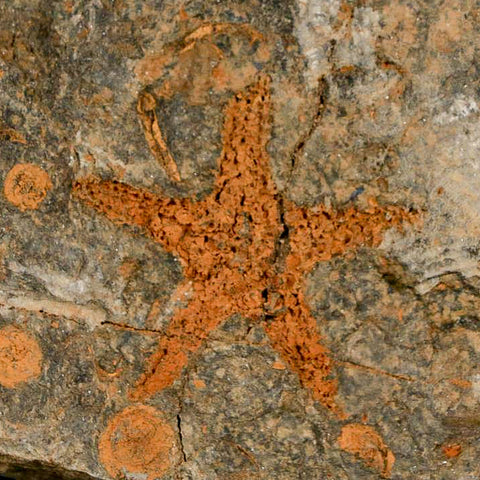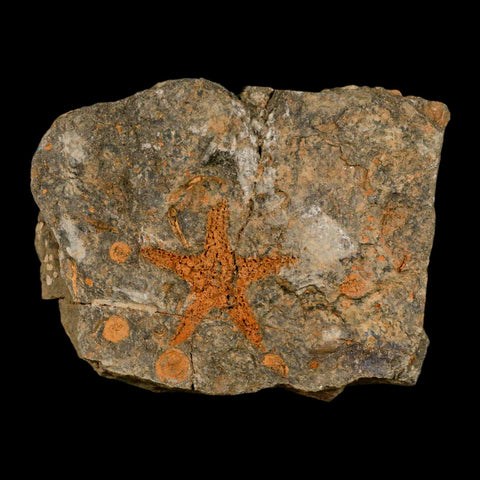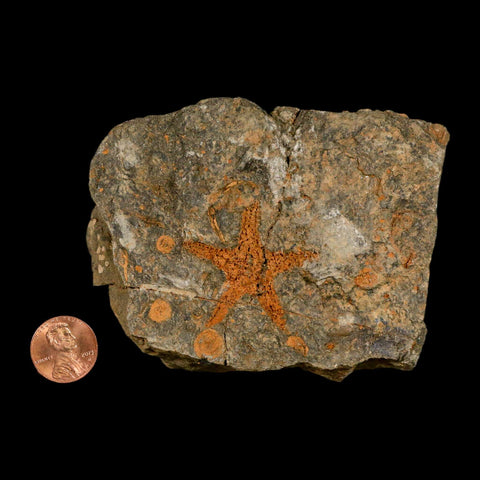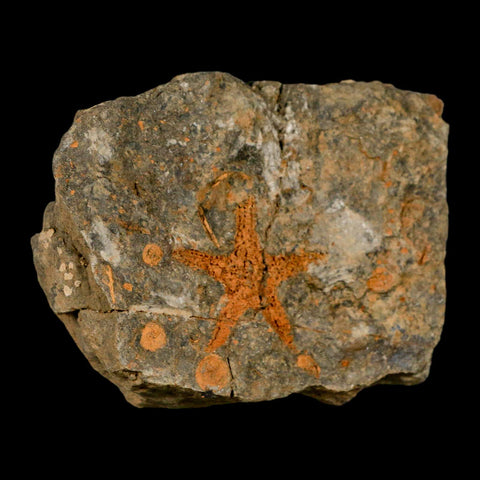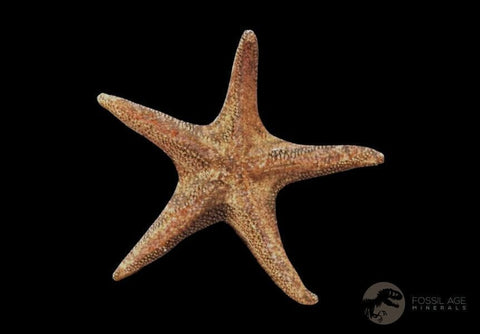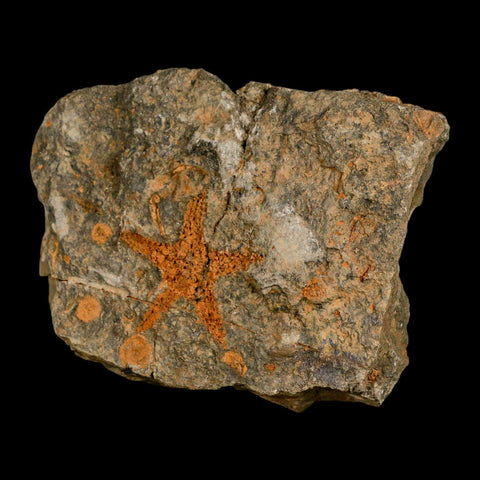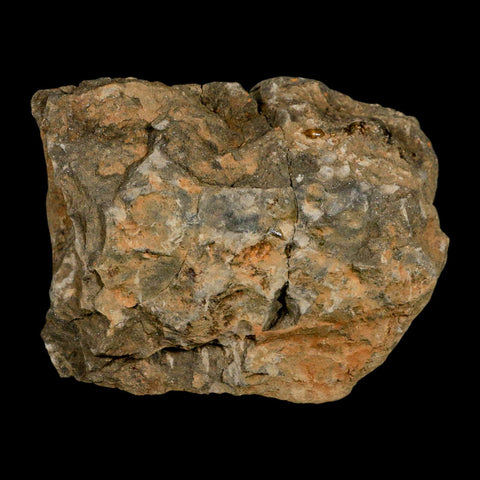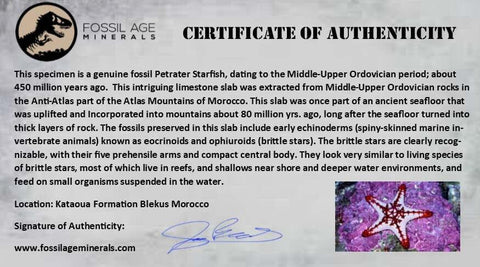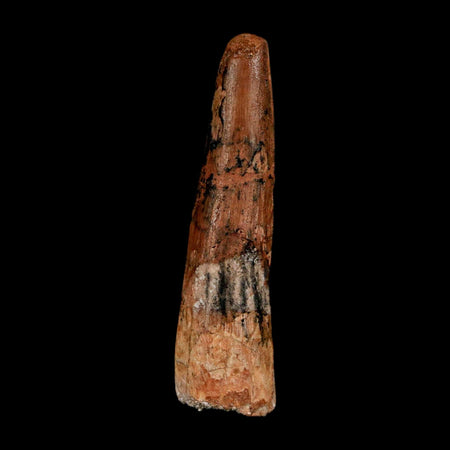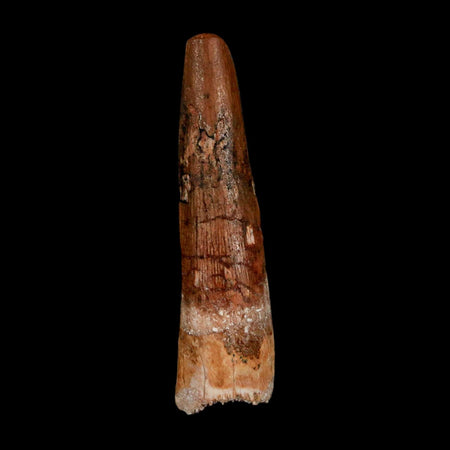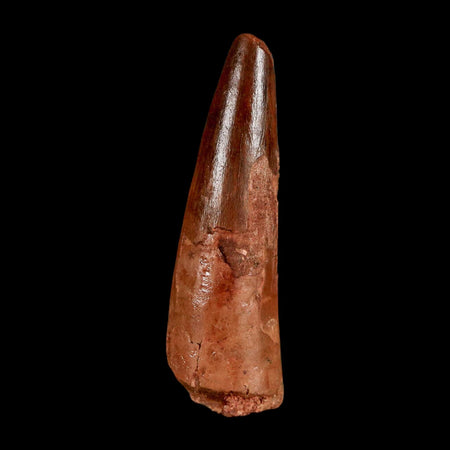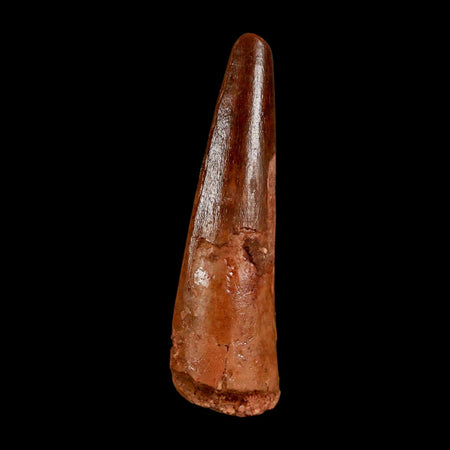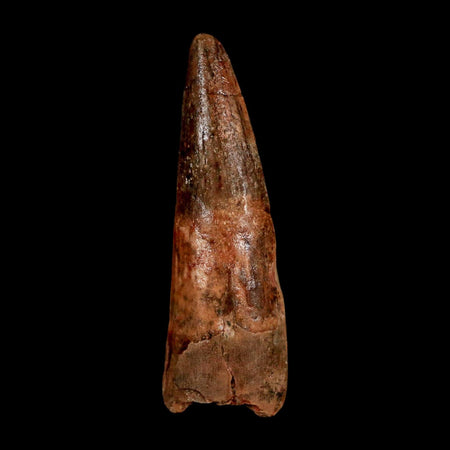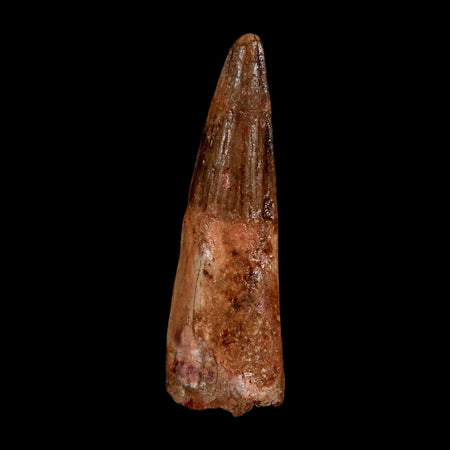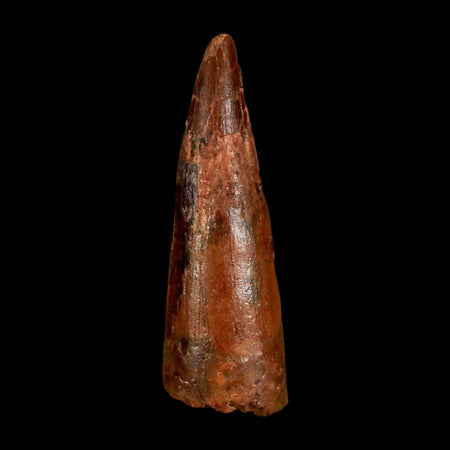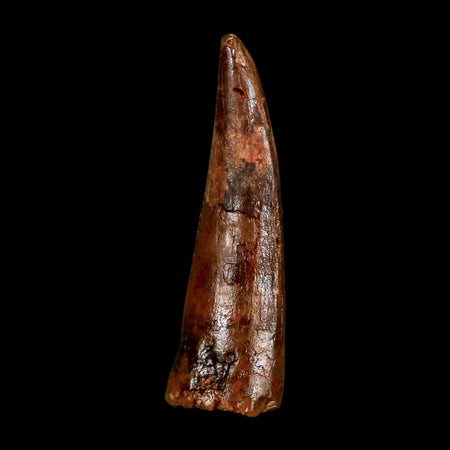37MM Brittle Star Petraster Starfish Fossil Ordovician Age Blekus Morocco COA
Location: Kataoua Formation, Blekus, Morocco
Weight: 12.5 Ounces
Starfish Dimensions: 37MM
Dimension: 3.9 Inches Long, 3 Inches Wide, 1.1 Inches Thick (Plate)
Comes with a Certificate of Authenticity.
The item pictured is the one you will receive.
Brittlestar Petraster
This intriguing limestone slab was extracted from Middle-Upper Ordovician (about 450 million years old) rocks in the Anti-Atlas part of the Atlas Mountains of Morocco. This slab was once part of an ancient seafloor that was uplifted and incorporated into mountains about 80 million years ago, long after the seafloor turned into thick layers of rock.
The fossils preserved in this slab include early echinoderms (spiny-skinned marine invertebrate animals) known as echinoids and ophiuroids (brittle stars). The brittle stars are recognizable, with their five prehensile arms and the compact central body. They look very similar to living species of brittle stars, most of which live in reefs, and shallows near shore and deeper water environments, and feed on small organisms suspended in the water.
Eocrinoids exhibit distinctive features, characterized by elongated, slender, tapering stems topped with clusters of arm-like appendages. These specimens likely belong to the genus Ascocystites, functioning as suspension feeders that extracted microorganisms from the water column through their specialized appendages. Though sharing a common name, eocrinoids are taxonomically distinct from crinoids (sea lilies), differing in several key morphological traits. Their elongated stems facilitated anchorage to firm substrates and enabled an elevated position above the seafloor, similar to many fossil crinoids. The assemblage includes both larger individuals and markedly smaller ones, which may represent juvenile stages or a separate species. Notably, the smaller forms are frequently found in close association with brittle stars, suggesting potential ecological interactions, possibly predation or commensalism.

Please be aware of the nature of fossils:
Being buried under the ground for millions of years under tons of pressure tends to be rough. No fossil comes out of the ground whole and perfect. Most fossils have undergone some restoration, while others are altered by man simply to enhance their presentation in different ways. The workers in Morocco do a very professional job of unearthing and preserving these natural treasures. These are part of the natural beauty of the fossil and are not considered defects.


